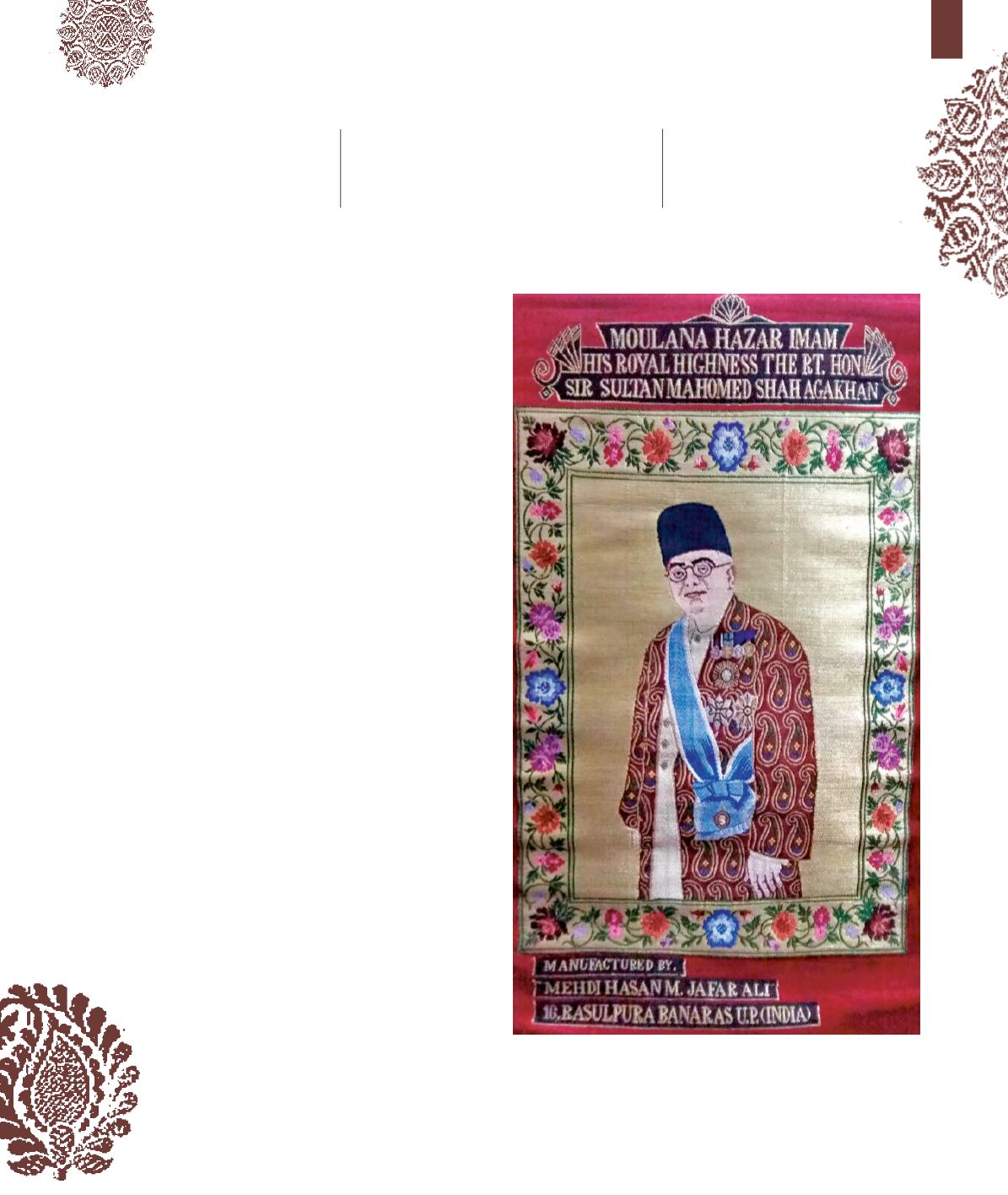
95
Banaras has long been synonymous with fine
hand-embroidery and hand-weaving. For
centuries, the rhythmic sound of weaving has
emanated from homes of weavers some of
whom lived in simple mud huts. In times past,
the weavers worked in a modest environment.
There were no tube lights, fans or coolers.
However, in a time-honoured tradition the
teaching and learning carried on in a peaceful
atmosphere and in the soft light of lanterns
as the elders taught the younger generation.
People were simple and devoted to their work
and wove beautiful sarees, dhotis, bedcovers
and yardage with cotton, silk and metal yarns.
Hardwork and patience are two prerequisites
for handloom weaving and hand embroidery.
In centuries gone by, the weavers of Banaras
were very hard-working. In spite of work
pressure and limited resources, they were able
to produce exceptional weaves with hand-spun
yarns. Some of these outstanding pieces are
displayed in acclaimed museums in different
cities in our country and abroad. In those
museums, lots of research is going on to
pass on this tradition of weaving to the next
generation.
Dynamics of Weaving
Today, training is given to young weavers at
cluster centres and Weaver Service Centres so
that they can preserve the art of weaving those
beautiful, historical and antique textiles, and
pass it down to future generations. There are
attempts to replicate the weaving of textiles,
done 200-300 years earlier, by using modern
technology. While this is a welcome step, I
feel that weaving is best learnt from one’s
environment and from a young age. Handloom
weaving is best learnt when one is young and
Outstanding pieces are displayed
in acclaimed museums in different
cities in our country and abroad.


